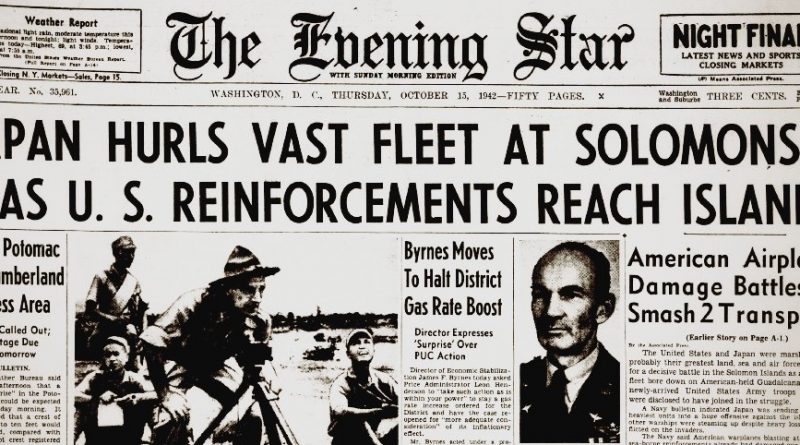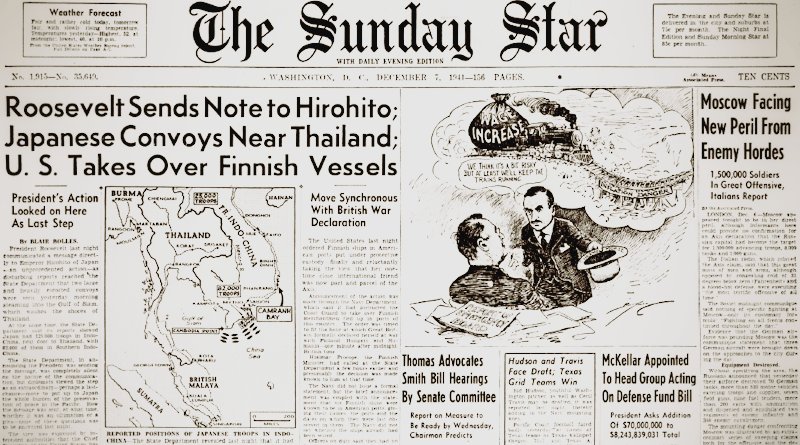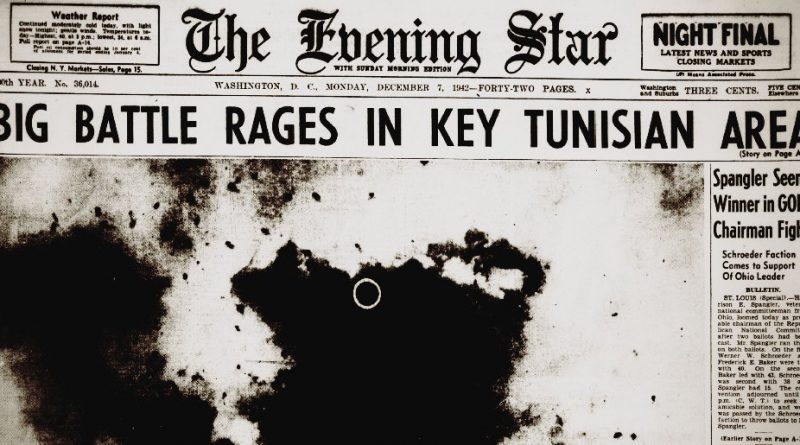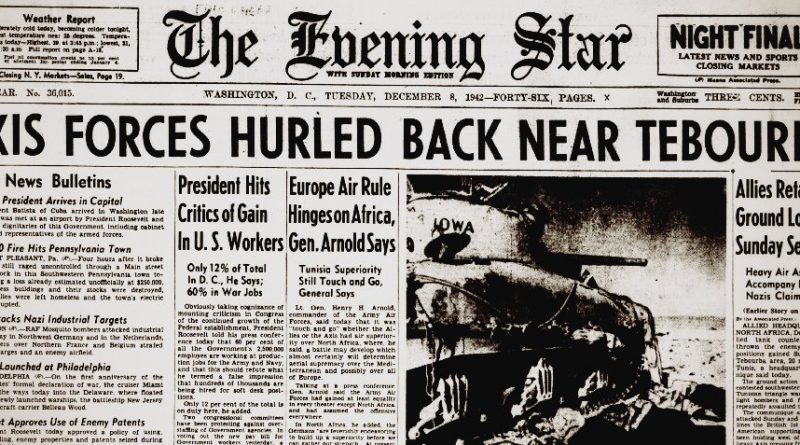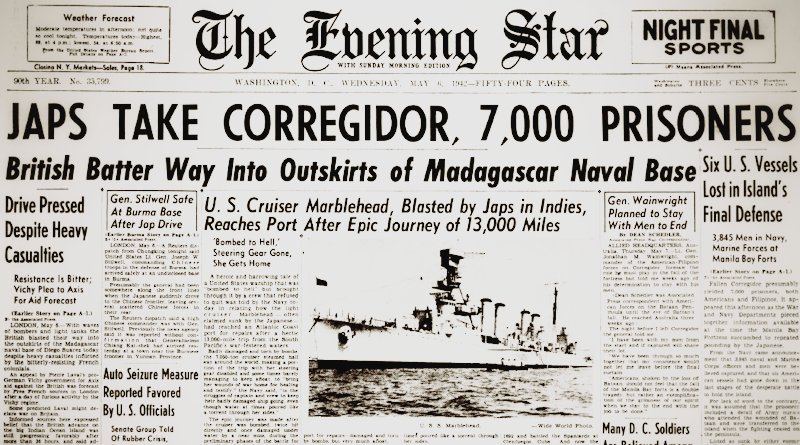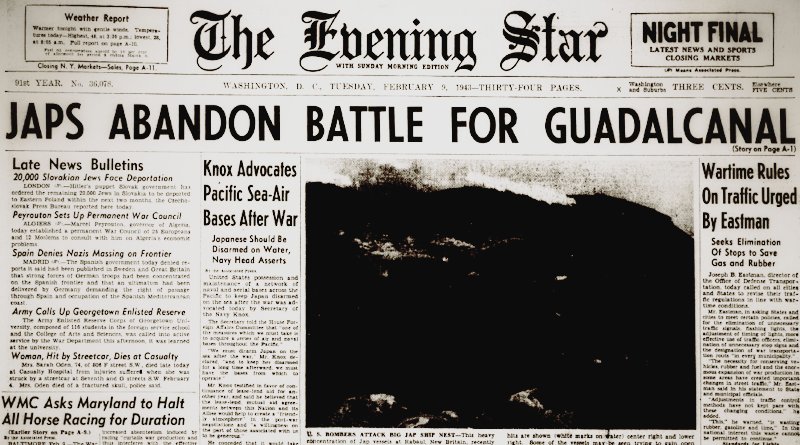World War II Chronicle: October 15, 1942
Click here for TODAY’S NEWSPAPER
Several generals are mentioned on the front page. Lt. Gen. George H. Brett, Commander in Chief, U.S. Army Forces, Australia, didn’t get along with Gen. Douglas MacArthur and is being transferred. Although he didn’t finish high school, Brett graduated with honors from the Virginia Military Institute in three years then accepted a commission in the Philippine Scouts, and he soon transferred to the U.S. Army as a cavalry officer. He became a pilot, then shipped to the Western Front during World War I. Appendicitis kept him out of the cockpit and he instead served as Brig. Gen. Billy Mitchell’s materiel chief.
During the Second World War Brett ruffled British feathers in the Middle East, so he was ordered to fly over and smooth things over. Caleb B. Haynes and Curtis LeMay (whom we wrote about last year) were pilot and co-pilot for the 26,000-mile journey. Soon, Brett is named Commanding General of the Caribbean Defense Command and Panama Canal Department.
Unlike his father, Brett’s son Devol managed to secure an appointment to West Point and graduates in 1945. He flew C-47s during the Berlin Airlift and 100 missions during the Korean War as a P-51D pilot. He led a F-100 squadron in the first operational day/night transatlantic air-refueling mission by fighters while part of the strike force that deployed to Lebanon in 1958. He also participated in the 1961 Berlin Crisis, then flew another 100 missions as a F-4 pilot during the Vietnam War. He was shot down once over North Vietnam, but picked up by search-and-rescue forces.
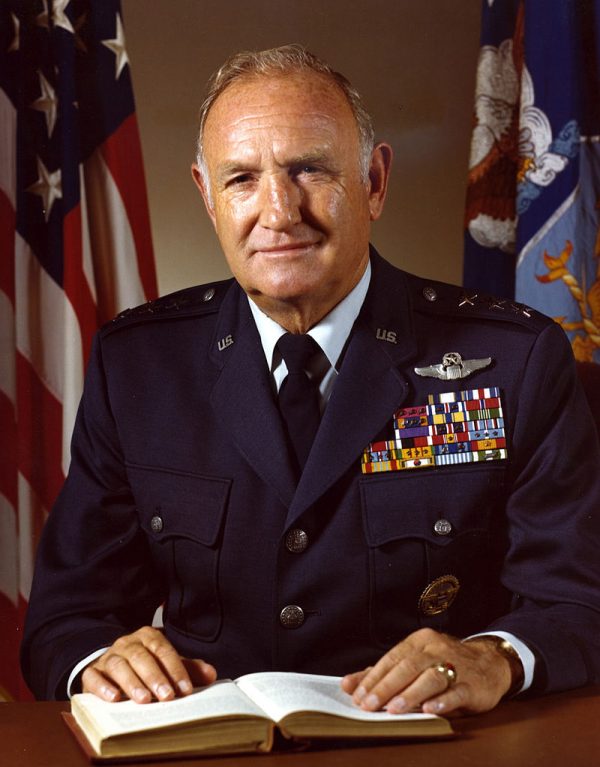
Lt. Gen. Joseph Stilwell has been mentioned several times in the papers but hasn’t yet been covered in the Chronicle. He played football for the U.S. Military Academy and graduated with the Class of 1904. During the First World War he served as IV Corps’ intelligence officer and helped plan the St. Mihiel Offensive. “Vinegar Joe” currently commands the China-Burma-India Theater, putting him on equal footing as theater commanders Eisenhower (Europe) and MacArthur (Southwest Pacific). His son Joseph Jr. is also a West Point man (Class of ’33) and currently serves under his father as Theater G-2 (intelligence). “Cider Joe” commands the 23rd Infantry Regiment during the Korean War and later becomes Commanding General, US Army Support Group, Vietnam, and was named Commanding General of the John F. Kennedy Special Warfare Center. He earned the Soldier’s Medal, four Bronze Stars, two Purple Hearts, 26 Air Medals, and is a master parachutist.
Millard F. Harmon graduated from West Point (Class of ’12) then accepted a commission in the infantry. After service in the Philippines he became a pilot in the Signal Corps and flew patrol missions on the Mexican border during the Punitive Expedition. He was attached to the French Air Force and earned the Croix de Guerre during the Somme Defensive. Maj. Gen. Harmon is currently Commanding General of U.S. Army Forces in the South Pacific…
Page two reports that Eddie Rickenbacker, America’s World War I ace of aces, Indianapolis 500 racer, and head of Eastern Airlines, has completed a study of American air power in the European Theater… Sports section begins on page 40. It mentions that Sid Hudson, who has won 40 games for the Washington Nationals over three seasons and has been named to two All-Star teams, is about to join the Army Air Force…
Grantland Rice’s column discusses the greatest all-around athletes in baseball and football. Honus Wagner received a lot more ink than Babe Ruth. Jim Thorpe was considered to be the greatest athlete ever, but Rice says that Pop Warner chose Ernie Nevers over Thorpe. He would know as he coached both men.
Ernie Nevers had broken both ankles during the 1925 season and had just removed a cast before a stellar performance against Notre Dame in the Rose Bowl. The Fighting Irish beat Stanford 27-10, but Nevers set a record with 34 carries and 114 yards — 13 shy of the Four Horsemen combined. That’s after Nevers handled the ball on all but three snaps as Stanford beat rival California for the first time in eight years. In 1929, now playing for the National Football League’s Chicago Cardinals, he scored all of his team’s points in two straight games: three touchdowns and an extra point against the Dayton Triangles then six touchdowns and four extra points against the Chicago Bears 40-6. His record of 40 points still stands today.
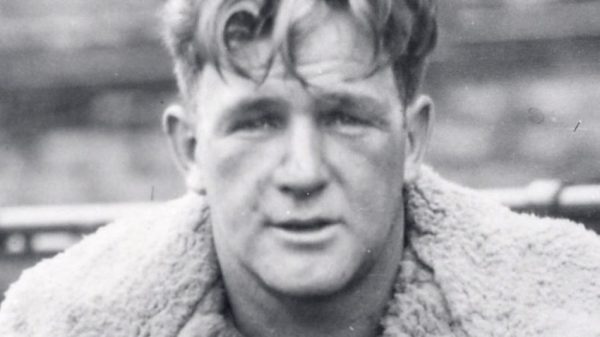
Nevers signed professional basketball and baseball contracts as well. He pitched for the St. Louis Browns from 1926-28, allowing two of Babe Ruth’s 60 homeruns in 1927. He is enshrined in both the college and NFL halls of fame. One of Nevers’ Cardinal teammates is former All-American Iowa Hawkeye tackle Duke Slater. When he wasn’t blocking for Nevers or Thorpe, Slater managed to get his law degree. He became Chicago’s first black Superior Court judge and is also in the NFL Hall of Fame. Iowa’s football field (not the stadium itself, which we will cover later) is named after Slater, part of the undefeated 1921 team that beat Notre Dame.
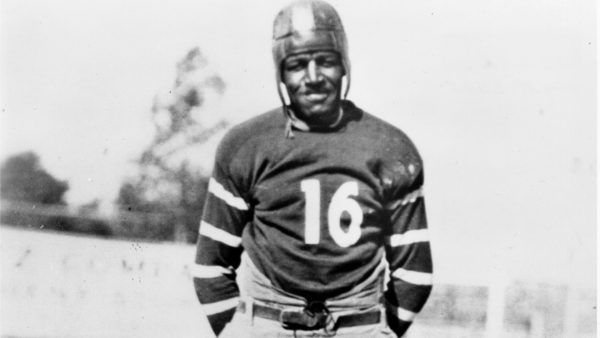
Speaking of Hawkeye law students and Notre Dame, Nile Kinnick was quarterback for Iowa in 1939 when they upset undefeated Notre Dame 7-6. He won the Heisman Trophy that year then turned down offers to play pro ball to become a law student and assistant football coach for the Hawkeyes. Iowa ended Noter Dame’s undefeated streak again in 1940. Kinnick joined the Navy three days before Pearl Harbor and is currently training to become a Naval aviator. He returned to Iowa one last time to watch Iowa open the 1942 season against Washington (Mo.) University and the crowd chanted “We want Kinnick” until he waved at them from the press box. He ships out aboard the USS Lexington in May 1943.
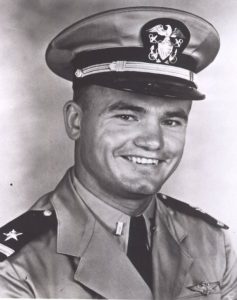
Interestingly, Kinnick was teammates on a Junior Legion baseball team with Bob Feller. The Hawkeyes’ football stadium (known as Iowa Stadium in 1942) is named Nile Kinnick Memorial Stadium 1945, but it isn’t the first so-named stadium. The Eighth Army renamed a stadium after Kinnick in Tokyo during the occupation of Japan. Like Slater, Kinnick is also a member of the College Football Hall of Fame.
Evening star. (Washington, D.C.), 15 October 1942. Chronicling America: Historic American Newspapers. Lib. of Congress.
https://chroniclingamerica.loc.gov/lccn/sn83045462/1942-10-15/ed-1/
